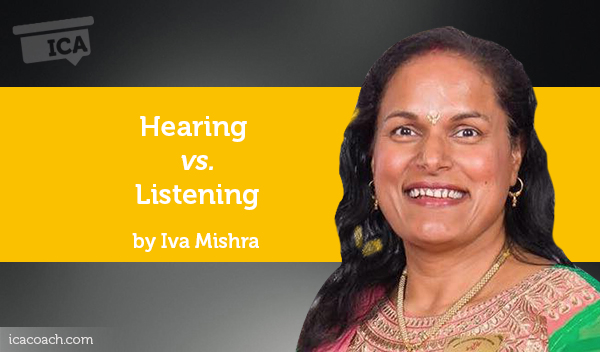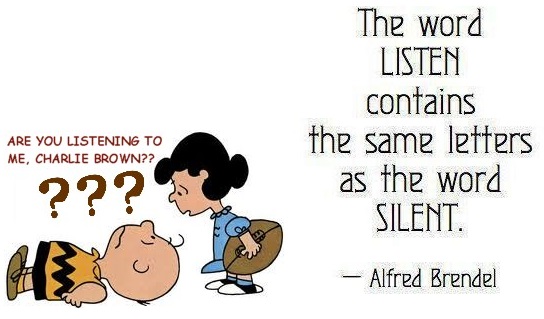 A Coaching Power Tool Created by Iva Mishra
A Coaching Power Tool Created by Iva Mishra
(Life & Business Coach, UNITED STATES)
Is there a difference between the concepts of listening and hearing? It is best to first define both words:
Listening
To pay attention to someone or something in order to hear what is being said, sung, played, etc. To hear what someone has said and understand that it is serious, important, or true.
Hearing
The process, function, or power of perceiving sound; specifically: the special sense by which noises and tones are received as stimuli. Opportunity to be heard, to present one’s side of a case, or to be generally known or appreciated.
 Hearing and listening both play a very crucial role in communication. Every time we are engaged in a conversation, we hear the sounds of each word that is spoken by others and also by us. These sounds are heard on an involuntary basis. Every day we all hear tons of noises and usually they come in one ear and leave thru the other ear. Listening however is a voluntary process. Listening starts with hearing a series of words, but builds up to something much more. In order to listen completely, we must be able to do the following:
Hearing and listening both play a very crucial role in communication. Every time we are engaged in a conversation, we hear the sounds of each word that is spoken by others and also by us. These sounds are heard on an involuntary basis. Every day we all hear tons of noises and usually they come in one ear and leave thru the other ear. Listening however is a voluntary process. Listening starts with hearing a series of words, but builds up to something much more. In order to listen completely, we must be able to do the following:
The Listening Process For Coaches:
The coaching space is a great place to practice active listening. As soon as we start a coaching session, active listening also starts. In order to empower our clients to reach their goals, we as coaches must be very aware and mindful of what is conveyed. Being actively involved requires us to acknowledge what is said. As we provide active listening to our clients, they in turn will open up and take the next steps necessary for them to make the change they are looking for.
Hearing is not sufficient. All obstacles to listening must be removed prior to starting any coaching session. This is important for Coach and Client, Turning off the television, radio or going into a separate room alone are ways to be decrease the distractions. In order to get to the “true” meaning of what a client is saying, we as coaches must withhold all our own thoughts, opinions and views from the coaching sessions. If we don’t do this then we may not be able to take full advantage of what our purpose is as a coach. Also we must practice a great deal of silence when we are actively listening to our clients.
As part of listening, we must silence our minds and also silence our thoughts. As easy as this sound, this can also be a very difficult thing to do as our minds have running thoughts all day long. We as coaches need to stay focused and centered on our clients so that we can provide paraphrasing. Active listening assists us to be able to provide feedback without simply sounding like a parrot. Listening for important key words and repeating them back to the client is a good sign of being in the “now” with our clients.
We can also be in the “now” by being mindful of asking questions that relay we understood what the client is saying. Such questions could be “Did I get that right? Or “Is that correct? Being emphatic is a great tool that can also be used in the active listening process. Who we truly are conveys the true feelings, to our clients, and shows empathy. Mindfulness and awareness adds another level to the active listening process.
As a power tool shifting from simply hearing to listening can create a whole new level of experience for both coach and client. If clients are willing they can be coached to develop active listening skills by sharing the above elements as part of coaching to make a significant change in how they listen to themselves, others and life in general. The life is always communicating with us we can choose to hear or listen it’s up to us.